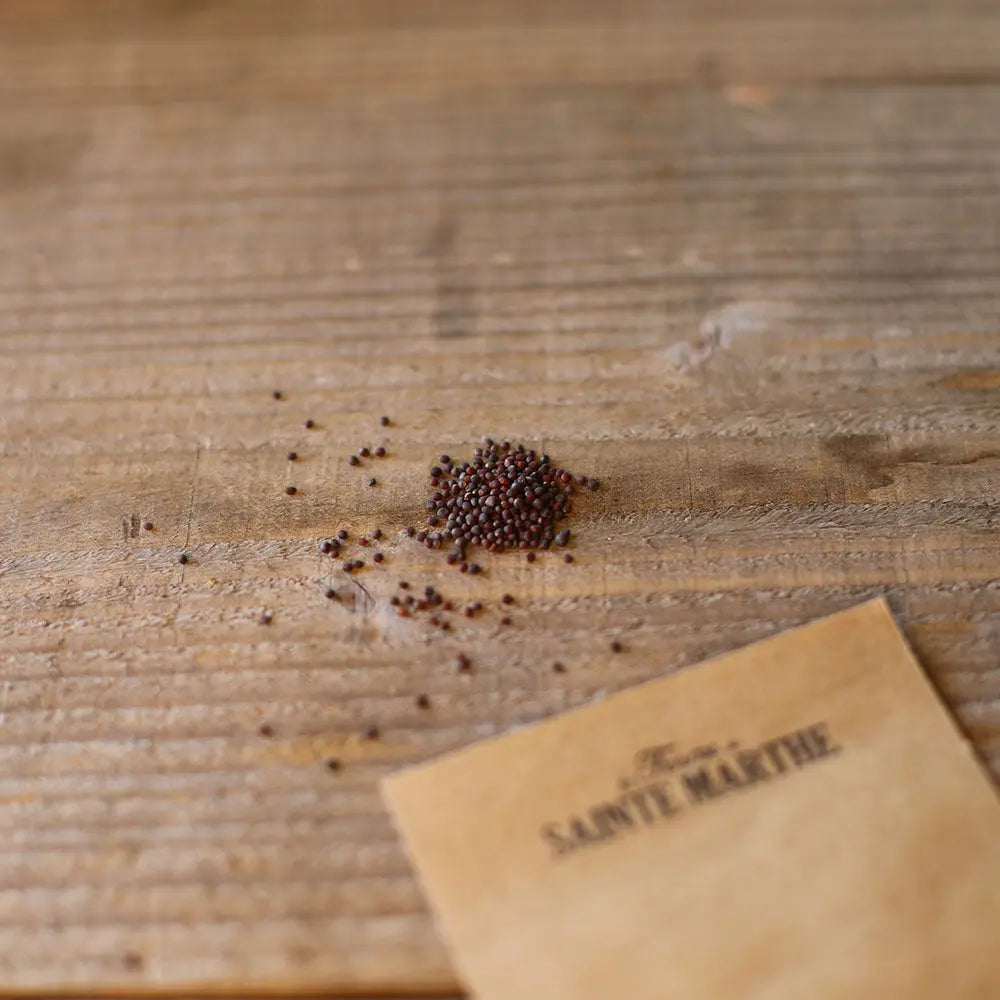TURNIP PETROWSKI AB
Brassica rapa
An old German variety with a slightly flattened yellow root and particularly fine, sweet, and aromatic white flesh. It is eaten raw, grated, or cooked. It is very early, developing in 1.5 to 2 months, and can be sown in spring for young consumption and in autumn for storage.
Sowing: March-April. Broadcast sow in beds, then thin to 10 cm along the row. Water abundantly to daily during dry periods. For autumn harvests, sow from late July to early September.
Harvest: May, June or September/October.
Successfully sowing Petrowski turnips
Sowing: in March-April or from July to September, broadcast in beds, 2-3 mm deep, having made two false sowings to avoid weeds. The soil must be loosened and the surface must be well refined. Keep the soil moist until the seeds germinate.
Once the seeds have sprouted, quickly place an insect-proof veil to prevent flea beetles from perforating the cotyledons of the young seedlings.
Thin to 10 cm along the row. Water abundantly during dry periods.
Good associations
Place fennel next to your turnip crops to repel turnip flies.
The turnip will appreciate the company of many vegetables: beetroot, carrot, celery, Brussels sprouts, spinach, peas, leeks, lamb's lettuce, mint, etc.
Harvesting turnips
Turnip harvesting takes place before the cold period.
The enemies
Flea beetles: place an insect-proof blanket as soon as the seeds have sprouted.
Turnip fly: The larvae of this fly burrow into the flesh of turnips. Place an insect net.









